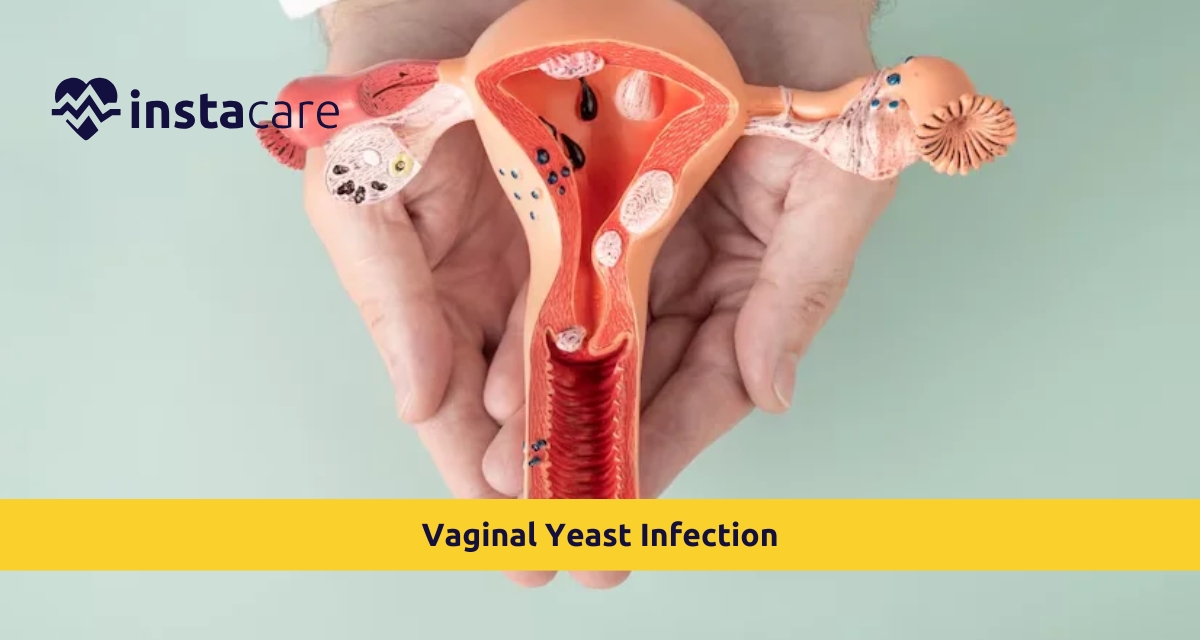A vaginal yeast infection medically comes under a bit of mischief and initiating into hell for some people. Such an entire can, beyond a vaginal space, gets opened into everyday living hellish conditions due to Candida-like fungus overgrowth from within an inner human self. Well known for being non-fatal, this infection goes a long way in causing an extreme level of pain together with a variable set of symptoms impinging on one's daily life. This itself demands due consideration for effective preventive and therapeutic measures against this infection.
Symptoms of Vaginal Yeast Infection
Grasping the symptoms that define a vaginal yeast infection will ensure early diagnosis and treatment. Out of all, the most prevalent complaints are regarding the Vaginal itching and burning. Burning is usually felt first, but it is soon followed by the unbearable itch, which can, for some women, be thought of as burning fire upon their very existence.
The suffering is such that it may involve their full attention at the expense of everything else as if they have been absorbed into a virtual reality world of torment in which there is little hope of rescue from their agony. A creamy whitish discharge with a purgative would always be likened to cottage cheese clumps. These discharges act somewhat like the caveat of vaginal thrush; the other name for a yeast infection.
Itching and Discharge
They are associated with itching and discharge and not infrequently with pain and discomfort and with redness and swelling in the vulva and vagina. Pain upon intercourse is also reported quite commonly, and this activity could be wholly uncomfortable or even painfully tricky. Some women refer to a condition as painful urination when an irritation from the yeast hampers their ability to urinate. If you experience any or all of these yeast infection symptoms, you must contact a healthcare provider for a suitable diagnosis and treatment.
Causes of Vaginal Yeast Infections
Knowledge of the causes of yeast infections would help in preventing yeast infections. Chiefly and mainly, the reason is the overgrowth of organisms of the genus Candida. Apart from antibiotics use, the main initiator of yeast infection is the imbalance of normal microbial vaginal flora that occurs when yeast has the opportunity to thrive. The development of this hormonal change occurs when pregnant menstruating or under hormonal therapy.
Diabetes is the other angular dimension because it creates a sugar-soaked medium for Candida and makes it too easy for the infection to occur. The immune system adds a further complication to the case. If the immune system of a person manages to sustain a more or less normal balance between microorganisms, then the vaginal fungal infection will be nothing very serious about it.
On the contrary, uncontrolled moisture works against the doomed person. Keep a check on humidity, e.g. tight clothing and wet swimming costumes for long periods provide a warm, moist breeding ground where yeast loves to thrive.
Diagnosis in Vaginal Yeast Infections
A woman visits her doctor with Vaginal Yeast infection symptoms, which leads to a medical examination and laboratory sample collection. The laboratory examination will establish Ca candida infection diagnosis by ruling out any other possible conditions showing similar symptoms, including bacterial vaginosis or sexually transmitted diseases. Proper infection diagnosis stands as the vital point because treatments for various infections show significant variation.
Treatment of Vaginal Yeast Infections
In treating vaginal yeast infections, options range from over-the-counter remedies to prescription drugs.
Over-The-Counter Treatments
Over-the-counter antifungal medications seem so familiar in treating yeast infections that they might appear as household names. Antifungal medications for yeast infections rapidly relieve a patient. Clotrimazole and miconazole are usually available in creams, pills, and suppositories. Much of the female population report their symptoms improving within a few days after initiating this treatment. Of course, soothing ointments and suppositories are applied only to the area.
Prescription Medications
Fluconazole or other more potent antifungal agents can be prescribed by the doctor in complicated cases or recurrent infections. This oral treatment against the infection works very quickly and is used primarily on women suffering from many recurrent yeast infections. The prescribed regime must be strictly followed, and the entire course must be completed. This is essential to ensure the infection is entirely wiped off the system.
3 Home Remedies for Yeast Infection
- Probiotics: Probiotics ingested, particularly in yogurt with live cultures or as probiotic supplements, may restore the body's normal balance of vaginal bacteria to avoid re-infection.
- Garlic: Another natural antifungal is garlic. Using garlic for antifungal purposes requires women to exercise proper caution to prevent tissue irritation both during ingestion and topical application.
- Tea Tree Oil: Users must highly dilute tea tree oil solutions when using their antifungal properties, or they may face surface irritations.
What To Know About Recurrent Yeast Infections?
Many women have recurrent yeast infections: four or more infections within one year. Talk to your health provider if this sounds like you. He or she might investigate whether an underlying medical condition, such as diabetes or immune system defect, is present and give you recommendations on some long-term management. In some instances, such long-term antifungal therapy might be employed to prevent a possibly newer recurrence of infection.
Yeast Infection During Pregnancy
The woman's pregnancy triggers hormone fluctuations together with vaginal moisture changes that allow many organisms to grow in these abnormal conditions. Pregnancy increases yeast infections to such high levels that they become one of the predominant microbial complications. These infections are generally very harmless providing a unique call to confirm the consultation from a certified healthcare provider for correctly treating during this stage.
Over-the-counter yeast infection treatments may not always be available; in most cases, the doctor or other qualified healthcare will offer safer treatments that will not harm the pregnancy. Treatment of a yeast infection during pregnancy is therefore very important in preventing complications that may threaten the mother and, at the same time, making the mother comfortable.
How To Prevent Yeast Infections?
Yeast infection prevention in the vagina requires a lifestyle change. Personal hygiene cleanliness is maintained, whereby if the genital area is kept clean and dry, it can inhibit or reduce the chances of any infections. It promotes the natural balance of bacteria disturbance and is much recommended for unscented soap and hygiene products.
Additional must include wearing airy fabrics. Cotton underwear is highly recommended, while tight clothing should be avoided so that moisture does not build up. Restriction of antibiotic use is also a method of preventing fungal infections, and antibiotics should be taken only when needed. Keeping up with some probiotics during and after this treatment would be suitable for keeping a healthy balance of bacteria.
Yeast Infection or Bacterial Infection - Know The Difference
Knowing the Differences between yeast infection and bacterial infection is essential in administering the proper treatment. Both might present with similar symptoms; however, the distinguishing symptoms are that yeast infections are thick and white, while the other discharges are greyish and tan to yellowish.
There, odor is more prominent in bacterial infections. A fish-like smell prevails in bacterial infections, while yeast infections hardly smell. These are just two treatments: yeast infection with antifungal and bacterial infections with antibiotics. These differentiations in symptoms will help you qualify for the needed care and sidestep unnecessary interventions.
Conclusion
As discussed, it does hold good true that a vaginal yeast infection proves to be a very common yet manageable condition. One can seek treatment to get over this and even prevent it the next time if one recognises the signs and symptoms and knows their causes. There are several ways to treat a yeast infection, from drugstore remedies to prescription medications to home treatments. Maintain good hygiene and make uncomplicated lifestyle choices to prevent this most uncomfortable condition. So, you can take active preventive measures for management against such infections.
Please book an appointment with the
best Gynecologist in Lahore, Karachi, Islamabad, and all major cities of Pakistan through
InstaCare, or call our helpline at 03171777509 to find the verified doctor for your disease.

